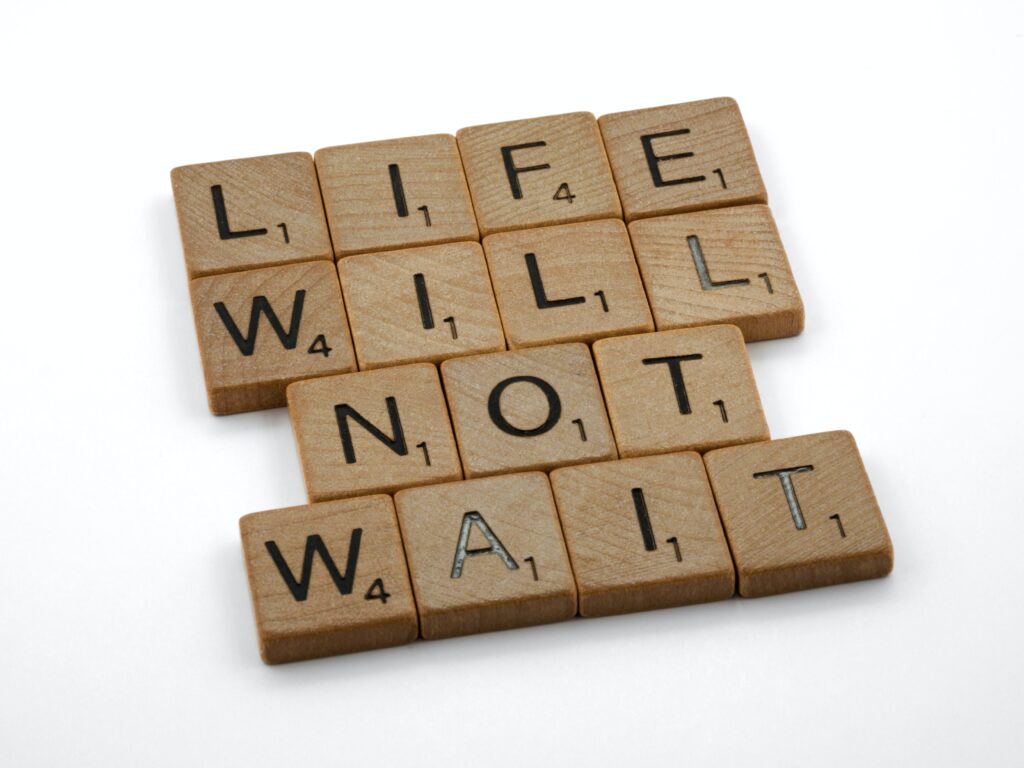How to apply Dr. Huberman’s concepts to creating any new habit.
If you have wanted to create any new habit, especially one that will be difficult for you to start and maintain, applying these concepts from Dr. Huberman can help.
These concepts come from his podcast: Episode 53: The Science of Making & Breaking Habits
What is a habit?
Dr. Huberman says that habits are ingrained behaviors that can either help or hinder us in achieving our objectives, and that it can take from 18 to 254 days to create a new habit.
How hard would it be to ingrain a strong habit of exercise into our behavior if we had not done so for many years?
He says that the strength of a habit is dictated by how much limbic friction there is and how much context dependence there is (whether you are likely to do the habit regardless of where you are.)
Limbic friction is how much conscious energy it takes to engage in acting towards the habit you want to create. The more anxiety, stress, pushback you have against taking action, the longer it will take to create a habit with automaticity (doing the habit automatically without thinking about it).
How do we reduce limbic friction so that we can build a habit more quickly?
Dopamine Reward – The Reward Prediction Error
Dr. Huberman discusses how important dopamine is for the formation of habits.
He says that if you expect a reward and get the reward, the particular behavior associated with generating that reward is more likely to happen again. For example, if you feel good about getting in a workout or finishing a run, this will cause dopamine to fire making it easier to want to do the action again.
He says that this is the reward-prediction error which is associated with dopamine and can help to accelerate and reinforce habit creation.
When we believe a reward is going to come, the anticipation of reward starts dopamine release. This dopamine release helps to create the neural pathways that lead up to the reward.
Anticipation can be used to help reduce limbic friction while also helping to establish the habit more quickly by thinking about the events that precede and follow the habit you are trying to build.
To understand how this works, Dr. Huberman talks about procedural memory.
He says that procedural memory, where you envision the sequence of steps that need to happen for the habit to occur, is an important component to overcoming limbic friction when building a new habit.
Anticipation can be built by thinking about the events that precede and follow the habit you are trying to build.
This can be done by envisioning and/or writing out the list of steps taken that lead up to and doing the habit, and then envisioning how it would feel once the habit is completed.
This will start to trigger anticipatory dopamine release and increase the likelihood of executing that habit. He says that doing this can help reinforce procedural memory and make it easier for the brain to execute the habit automatically over time.
Identity vs. Goal based habits
Dr. Huberman talks about the difference between goal-based and identity-based habits.
Goal-based habits are based on specific achievements: I will exercise for 30 minutes each day. I will run 10 sets of stairs. I will run 5k three times a week.
An identity-based habit evolves around your identity: I am a fit and healthy person, so I do healthy things to fit the identity I have created for myself.
Dr. Huberman says that identity-based habits are better than goal-based ones as they are more flexible and adaptive.
If you have a set goal of running 5k several times a week and injure yourself, you might lose the habit of running. If you have created an identity around being healthy, you might find other ways to stay in shape.
It doesn’t mean that you shouldn’t use goal-based habits. They are effective in helping you get started when creating a habit and are sometimes faster to ingrain.
My advice is to try to build an identity around the habit you want to create, and then use some goal-based habits to get started. Ex. I am a healthy person. Every day, I will workout for 30 minutes a day.
Task Bracketing
Dr. Huberman explains how our brain and body’s rhythms can affect our limbic friction throughout the day and he makes some suggestions on how to use this to your advantage.
He says to break the day into three, 8-hour phases.
He says that in the first 8 hours after waking, Phase 1, is the best time to start a new habit as it is easier to take on tasks with high limbic friction due to an increase in several hormones after you wake up. Your body is more alert and rested, so it is easier to overcome resistance at this time.
I have found that it is easier for me to come up with topics and outlines when I am alert and rested in the morning as I am more focused and alert. When I am tired, I find it takes me much longer to decide and come up with these things.
If you are starting a new exercise routine, this phase would be the best time to learn how to perform the exercises correctly. Learning new yoga poses, kettle bell routines, or how to lift correctly requires more focus and mental capacity, so doing these in phase 1 should make them easier to learn and implement.
In Phase 2, 16 hours after waking, he says that as our hormones start to decrease, it is a good time to engage in activities that involve reflection, planning, and preparation.
He suggests things like journaling, preparing for the next day, and meditating.
I have found that it is easier for me to clean up and edit what I wrote in the morning during this time, as I don’t need to think about what to say or how I will structure things.
After you are comfortable with the exercise routines and how to do the exercises correctly, Phase 2 might be a good time to do some exercise such as yoga or going for a walk to help you wind down and reduce stress.
He says that the final 8 hours, Phase 3, is the time to reset our body. During this time, you should wind down, avoid bright lights and screens, and get good sleep. This will help you have less limbic friction when you wake up in the morning.
Linchpin Habits
He also talks about linchpin habits, which are habits that make other habits easier to execute, especially if they are enjoyable. You might enjoy taking walks and can turn part of your walk into a jog. You might enjoy learning something new and can combine an informational podcast with a workout.
He says that identifying and cultivating linchpin habits can facilitate the adoption of desired behaviors.
In my last article, I asked the question: What is one habit, that if done, would lead to positive outcomes in other areas of your life, and I challenged you to make your own.
This would be a type of lynchpin habit.
For me, it was avoiding my electronics 1 hour before going to bed. This has already positively benefited me in several areas.
My productivity is way up. I get a lot of small tasks done before bed with the time I do not waste on my phone, and I wake up earlier and feel less tired due to getting more sleep which has led to much more productive mornings.
To help you start exercising, what would be a linchpin habit for you? Getting more rest? Eating one healthy meal to start the morning? Walking in the morning? Replacing electronics before bed with a book?
Summary
Here are the key points to keep in mind when you want to create a new habit more quickly and strongly.
- Reduce Limbic Friction by utilizing anticipation. Dopamine is created when there is anticipation of a reward and is important to creating habits. Anticipation can be created by envisioning the steps needed to start the desired behavior and what you envision after you have finished the desired behavior. This will help to establish the habit more quickly, and it will also help to overcome limbic friction when actually starting and doing the desired habit.
- Make use of Task Bracketing. Working on new habits, especially those that require concentration and learning of new things, in the first 8 hours after waking is easier because our body is more alert and rested, so it is easier to overcome limbic friction. The second phase is best for things like preparing for the next day, reflecting on the day, and winding down. The final phase should be used to get good rest so that you are ready to go the next day.
- Identity vs. Goal-Based Habits: Identity-based habits are more adaptable and flexible. Building an identity around being healthy will help overcome problems when goal-based habits cannot be done due.
- Linchpin Habits: These are habits that facilitate the adoption of other habits and make them easier to do. A linchpin habit I created was to strictly avoid electronics one hour before sleep which led to many positive outcomes in other areas. This article can help you come up with some ideas of other linchpin habits.
What new habit will you start? Let me know in the comments below.
When you put in writing and tell others what you will do, it helps to create commitment and increase the likelihood of actually following through.
Please note that I did not discuss everything that was in the podcast such as breaking bad habits and some of the deeper science around the concepts. It is a 2 hour, very informative podcast, and I recommend you listen to it if you have time.
I will share what I learned about overcoming bad habits in my next article, so follow me if you would like to see the next article.
Subscribe to my newsletter for weekly content related to improving your mindset and overcoming procrastination sent directly to you, and to get an update on how my own challenge went.




Pingback: If You Really Want to Break a Bad Habit, Follow Dr. Huberman’s Advice - Daniel Hall Life Coach | Create a Strong Mindset
Pingback: Forget complex morning routines. Create a simple one that gets you going. - Daniel Hall Life Coach | Create a Strong Mindset